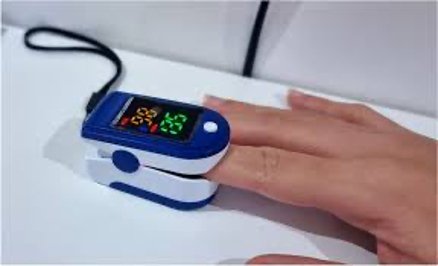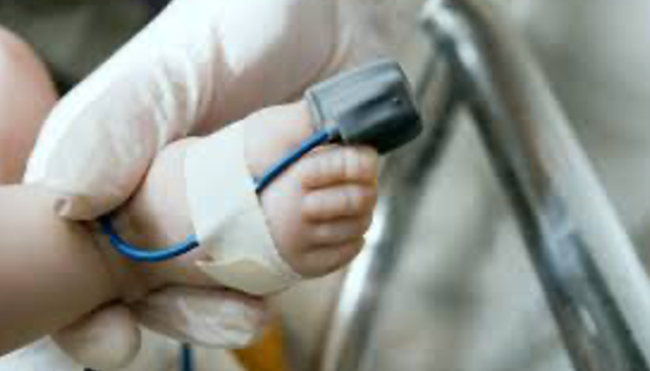Pulse Oximeter Check for Congenital Heart Defects : Ek Light Zindagi Ki
March 19, 2024 | Contributed by Dr Swati Garekar
The Corona virus pandemic of 2020 was a nightmare for all of us. But the one effect it had was that most Indians became aware of the wonder that is the DIGITAL PULSEOXIMETER. A pulse oximeter is a small portable device that clips over a finger and uses infrared light to detect oxygen levels of the pulsatile blood in the finger.

A number below 95% is low. The most common reason for a low reading is a disease like pneumonia or severe asthma. Such a patient needs to be seen by a doctor.
The Pulse Oximeter and Congenital Heart Defects
Did you know that the pulses oximeter plays a vital role in picking up congenital heart defects (CHDs) in babies and children? Many heart defects in babies let the blue (impure) and red (pure) blood mix abnormally or prevent enough blood to reach the lungs. This gives rise to low readings of the pulse oximeter (as low as 60-70%). In fact, the levels can become dangerously low soon after birth of the baby born with such a condition. If the baby is turning blue (which is actually difficult to see in most Indian babies because of dark skin), the doctors can investigate and find out the problem: whether it is the lungs or the heart that is unhealthy.
However, the problem arises when the baby doesn’t turn blue while in the hospital (after birth). Instead, the baby may slowly turn blue at home, over the next 3-4 days and may become critically sick till parents notice something is wrong and rush baby to hospital. Awareness about congenital heart defects is limited amongst most people. Some Children Heart Foundation in India have been working to build this awareness, but the need far exceeds what these organisations are able to do.
A simple pulse oximeter level check performed on every baby, whether or not the baby appears blue, BEFORE GOING HOME, can pick up hidden low oxygen levels. This testing at the time of going home of the baby is called “pulse oximetry screening of newborns” and is the rule in many countries around the world. It is becoming the norm in some states in India as well but needs to be implemented much more rigorously.

Once a low oxygen level is detected in the baby, the baby can be monitored closely, and an echocardiogram (ultrasound of the heart) is done to check if indeed there is abnormality in the heart.
Thus, pulse oximetry screening is very advantageous because the baby with heart defect gets diagnosed and treated sooner.
Some heart defects that can be picked up by pulse oximetry screening before discharging a baby home after birth are: TGA (transposition of the great arteries), TOF (tetralogy of Fallot), HLHS, tricuspid atresia and other single ventricle conditions and certain kinds of DORVs.
It is important to note that the pulse oximeter test cannot pick up other heart defects of newborns where the oxygen levels do not dip. Common examples are ASD/VSD (holes in the heart) or valve narrowing.
The government’s “Ek Boond Zindagi ka” polio campaign was a success. It is now time to adopt another one “Ek Light Zindagi Ki”.
Ask your doctor for a pulse oximetry check on your newborn before discharge home.
Dr. Swati Garekar is Consultant Pediatric Cardiology at Fortis Hospital, Mulund.

